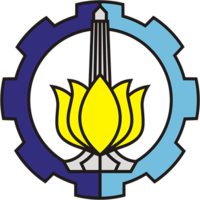Human Resources Planning Using Workload and Job Analysis as The Basis of Improving the Organizational Structure in The Marketing (Case Study of Pt. IMST)
Abstract
Keywords
Full Text:
PDFReferences
Dan, K., & Soft, P. (n.d.). Buku II Kamus dan Profil Soft Competencies , serta Kriteria Rekomendasi dan PT Industri Kereta Api ( Persero ).
Dessler, G. (2020). Human Resource Management, 8th edition. In Personnel Review (16th ed., Vol. 31, Issue 3). Pearson. https://doi.org/10.1108/pr.2002.31.3.386.3
Hancock, P. A., & Caird, J. K. (1993). Experimental evaluation of a model of mental workload. Human Factors, 35(3), 413–429. https://doi.org/10.1177/001872089303500303
Moleong. (2018). Metodologi penelitia n kua lita tif / penulis, Prof. DR. Lexy J. Moleong, M.A. . PT Remaja Rosdakarya,.
Noyes, J. M., & Bruneau, D. P. J. (2007). A self-analysis of the NASA-TLX workload measure. Ergonomics, 50(4), 514–519. https://doi.org/10.1080/00140130701235232
permenpan. (2020). Peraturan Menteri Pendayagunaan Aparatur Negara Dan Reformasi Birokrasi Republik Indonesia Nomor 26 Tahun 2020 Tentang Pedoman Evaluasi Pelaksanaan. 1–46.
Prien, E., Goodstein, L. D., Goodstein, J., & Gamble, L. G. (2009). Job Analysis (M. Davis (ed.)). John Wiley & Sons, Inc.
Rothwell, W. J., & Kazanas, H. C. (2003). Planning and managing human resources : strategic planning for human resources management ( and S. F. Suzanne Bay, Robie Grant (ed.)). HRD Press, Inc.
Schuler, R. S. (1992). Linking the,People with the Strategic Needs of the Business. Organizational Dynamics, 21(1), 18–32.
Stanton, N. A. (2013). Human Factors Methods. In Angewandte Chemie International Edition, 6(11), 951–952. (2nd ed., Issue Mi). Taylor & Francis Group.
Van Buren, H. J., Greenwood, M., & Sheehan, C. (2011). Strategic human resource management and the decline of employee focus. Human Resource Management Review, 21(3), 209–219. https://doi.org/10.1016/j.hrmr.2011.02.004
Yammarino, F. J., Dionne, S. D., Schriesheim, C. A., & Dansereau, F. (2008). Authentic leadership and positive organizational behavior: A meso, multi-level perspective. Leadership Quarterly, 19(6), 693–707. https://doi.org/10.1016/j.leaqua.2008.09.004
DOI: http://dx.doi.org/10.12962%2Fj24433527.v16i1.17970
Refbacks
- There are currently no refbacks.
This work is licensed under a Creative Commons Attribution 4.0 International License.






